 New Zealand (1914-1915)
New Zealand (1914-1915)
Moving Fortress – None Built
In the history of the development of the modern tank in WW1, a lot of people are aware of the Landships Committee and names like Stern, Swinton, and Tritton – names synonymous with the invention of the tank. Fewer people are aware of Lancelot de Mole, an Australian inventor who had submitted a tracked vehicle design which was ahead of its time and represented a lost opportunity for those developing the first tanks in Britain in WW1. Almost unknown until now are some of the inventors of the ideas which never got taken seriously. One unnamed antipodean inventor had his invention submitted by a friend to the British military before the formation of the Landships Committee in February 1915; Mr. E.C.Evelyn Mills. Whether Mills’ was writing from a ‘friend’ to mean himself or genuinely on behalf of another is not known but this whilst this person’s ideas may seem naive now, especially in light of over a century of armored warfare experience which followed, this 1914 concept was, if anything, modest. As Mills failed to name his friend and was asking for a substantial sum of money it is perhaps more likely that he was simply writing on behalf of himself. Consigned to being forgotten by history, all that is left of Mr. Mills’ work lies in just three surviving pages of text in the files of the British Ministry of Munitions. What they contain though is a rare glimpse into an early idea for armored warfare and one which, unlike De Mole, has had no recognition until now.
First Contact
On 16th October 1914, Mr. E.C. Evelyn Mills wrote from the Royal Colonial Institute, Northumberland Avenue, London, to Lieutenant Colonel G.N.H. Barlow, an experienced artillery officer. Mills had designed with the assistance of an unnamed friend a vehicle for defeating “the atrocious Prussians”. Lt. Col. Barlow thankfully did not discard the unusual idea from Mr. Mills, but instead passed it on to Col. Louis Jackson, a retired officer of the Royal Engineers. Col. Jackson would later return to service as a General and serve as the head of the Trench Warfare Research Department at the Ministry of Munitions. Col. Jackson then wrote to Mr. Mills, but it was not until 22nd April 1915 that Mills provided more technical information outlining his idea.
Role
One of the key defining problems in the early days of the development of what became known as tanks was what role they were to perform. In 1915, this had started for the Landships Committee as a means to transport a large party of men, protected from German machine-gun fire, over broken ground covered with barbed wire. Effectively, this was what would be known in modern terms as an Armored Personnel Carrier but, in 1915, there was no such name. Later, these carriers changed in role to a vehicle intended for the destruction of enemy machine-gun emplacements instead. In 1914, when Mills submitted his idea, these vehicles were still a long way away both in concept and technology.
Without words such as ‘tank’ with which to name his vehicle, Mills simply defined his new vehicle as a “travelling Motor Fortification and Charging Device” in his initial letter and then, in a follow-up, as a “Rapid Travelling Armour Clad Field Fortification”. Both names give a very clear impression as to what it was that Mills was intending for use from his vehicle. Primarily, the vehicle was to be used to screen soldiers from enemy fire by providing a large mobile shield or “breastwork” for up to 200 soldiers, although, in his April 1915 letter, he changed it to provide cover for 150 men instead.
Mills envisaged a novel form of attack, with some unnecessarily complex ideas for moving the vehicle forwards and backward almost randomly to make targeting by enemy gunners much harder. As the vehicle advanced, it would plough over and through enemy positions, leveling them for the men following. It would advance over enemy trenches up to 10’ to 12’ (3.05 to 3.66 m) wide, a figure more than double the expected 5’ (1.52 m) trench which was set out for the Landships Committee later in 1915. Having crossed the enemy trenches, the vehicle could then turn to follow the lines of enemy defences to clear them of enemy troops but it could also directly assault an enemy gun by charging it and would not have to turn around in order to withdraw from combat. Further to this ‘charging’ idea, the vehicle was also supposed to be able to be used “as a conduit or ram for attacking a Fort, running right up to a wall. Mining or attacking and discharging any kind of explosive, bombs etc, bursting up wall of Forts etc”.
Following the attack on the enemy, the vehicle could also be used to carry wounded troops to the rear or even be used as a transporter for stores and supplies. The internal space was seen as being large enough to accommodate 2 or 3 field guns or military wagons.
Armament
As well as the rifles of the 200 men being carried by this vehicle, Mills also foresaw fitting it with “quick firing machine guns” on the front and sides as well as “larger guns” which were unspecified. Altogether, the firepower for the rifles, machine guns, and ‘larger guns’ across the sides would provide the design with what Mills’ claimed would be a “fearful broadside”.
Design
Sadly, there are no sketches available from Mills’ to show what his vehicle was to look like. If he had sent sketches in with his original letter of 1914, those are now lost, but as none were mentioned in the letter it would appear that there were probably not any at that time. In April 1915, Mills was only suggesting that drawings would be provided if the scheme was approved, which once more suggests that although he may have some sketches none were sent in with the April letter. Again, if any were actually sent in they were not retained with the letter and are now lost. Without those, it is impossible to know exactly how Mills saw his design but he provides sufficient information in his description of the vehicle on which to make a reasonable estimate as to what it may have looked like.
Heavily sloping armor plating across the front, top, sides, back, and bottom was sufficient to stop enemy bullets from injuring the 150 to 200 men inside the vehicle. In 1914, this would have likely resulted in 8 mm to 10 mm of bulletproof plate which was considered adequate prior to the use by the Germans of ‘reversed’ or steel-cored bullets. The sides were to have 120 rifle ports on each side and another 20 or so at each end with a steel or iron shelf for marksmen to lie on when firing, a total 280 loopholes.
Although Mills did not specifically mention side or rear armor, he did allude to it in discussion of the armament and fightability of the design, leaving no doubt that the vehicle was to be completely covered in armor. What is very unclear, however, is his intention that the armor plating should be “hinged and formed [so] that it [the vehicle] can be run into a river with others of its kind and form a continuous Bridge for troops, wagons, artillery, cavalry &c [etc.] to pass across water courses etc.”
With the description of it as a ‘conduit’ as well as a bridge, it would appear that Mills’ design was likely a relatively straightforward box shape rather akin to a medieval siege tower laid on its face and driven forwards. One complicating factor is the description that the vehicle would be able to travel over obstacles up to 8’ (2.44 m) high passing through the vehicle. There is no mention of ground clearance and he provided the dimensions as approximately 37’ (11.28 m) long x 22’ (6.71 m) wide x 11’ (3.35 m) high. If it could traverse an 8’ (2.44 m) diameter obstacle down the middle of the vehicle, this would leave just 3’ (0.91 m) to the roof of the vehicle – not even enough space to sit in. Mills describes the interior fittings as ‘shelves’ though indicating that, rather than having a floor, his design seems to simply forgo the floor and have the man stand or lie on platforms along the sides and inside the front and back. This arrangement would mean that the doors at the front and rear would be upward opening making much clearer how it could work as a bridge, although it would mean that the observation tower would presumably have to be off to one side so as not to prevent troops, horses, guns, etcetera from crossing over the roof.
With doors at the front and back, this would allow the hollow floorless-box to act as the conduit he planned and fitted with a large folding door at the front would allow it to discharge troops for assaulting a position. Mills was also careful to make clear that there was enough space inside to provide a shelter for a 12 lb. gun with its 24’ (7.32 m) gun carriage with enough space for firing.
The unusual arrangement is actually reflected in the early work on the Pedrail landships in 1915 which had also involved consideration of troops carried in a sort of ‘corridor’ along the sides of the vehicle behind armor. For the Pedrail landships, that method of carrying troops was estimated by Colonel Crompton (the contracted expert engineer on the committee) to require 0.49 m2 per man. Mills’ vehicle would (assuming a single-tier floor area on each side) have a floor area of more than double that on the Pedrail landship at 48.17 m2. At 0.49 m2 per man this would provide space for up to about 100 men. Assuming that the 3’ (0.91 m) high area over the central portion of the vehicle could be used for a man lying prone, this would increase the ‘floor’ area of the vehicle to 75.69 m2. A lying man takes up more space but estimating that space as four-times the space of the standing man, this would add a further 13 or 14 men to the total capacity and this may be the ‘shelf’ to which Mills referred. Neither of those floor area figures, however, account for the space which would have to be taken up by the motors, fuel tanks and other components to propel it.
This would perhaps explain the ‘bridge’ idea too, as it would need only be driven into the river and use its hollow shape to create a covered bridge.
At the front and back end of the vehicle was a plough with the intention that this would destroy enemy defences such as earthworks, allowing troops behind to pass through. The vehicle was to be fitted with a wireless telephone for communications. A key feature of the design was the use of a pneumatic telescopic lookout tower 60 (18.29 m) to 100 feet (30.48 m) high, fitted with a searchlight.
Mills’ foresaw an ideal speed as being about 20 to 25 mph (32 – 40 km/h) and estimated (very optimistically) that each vehicle would cost between £4,000 and £5,000.
Power for the vehicle was supposed to come from a pair of 120 hp ‘Daimlers’, which, for a total estimated weight of just 18.5 tons (18.80 tonnes), would mean a power to weight ratio of 6.38 hp/t. This was surely highly optimistic bearing in mind that even Colonel Crompton’s wheeled fort design of February 1915, which was substantially smaller, was going to weigh 24.7 tonnes fully laden with men and guns. Based on this, it seems likely that the weight estimate from Mills’ was far too low and would likely be nearer 30 tonnes, rendering it significantly less mobile than what Mills was proposing.
As the design was effectively two fighting-halves connected by a roof, it appears likely that Mills envisaged one engine on each side driving the wheels. This system would have the significant advantage that the wheels would not have to turn to facilitate steering and it would rely on the skid-steering principle, with direction being affected by varying the throttle to the engine on one side over the other, rather like the way the Medium Mark A ‘Whippet’ was steered. Without actual plans of the vehicle or an explanation of how it was to be done though, this arrangement and method of steering is speculative.
Mills’ vehicle idea had some clear rationale behind it but, as an idea, it was still fundamentally flawed. Despite whatever benefit this engine arrangement may have brought, the vehicle was still wheeled and not tracked. Mills never specified how many axles of what size there were meant to be on the vehicle. The only data provided about the wheels is that they were to have a track width of 10’ (3.05 m), which is the distance between wheels along their axle.
Wheels would mean it was going to create a very high ground pressure under each wheel and that even with multiple wheels it would still produce an excessive loading on a soft surface.
Who was E.C. Evelyn Mills?
The clue to identifying E.C. Evelyn Mills is that he wrote in from Royal Colonial Institute, Northumberland Avenue, London. A check of various registers and legal documents of the period finds that, in 1902, Mr. E.C. Evelyn Mills was the owner of an 1898-built, 15-ton Australian yacht called ‘Rainbow’ registered in Wellington, New Zealand to a local yachting club. This would certainly help to explain some of the features and descriptions, like the tall mast with searchlight, and use of nautical terminology, respectively. The NZ records are also supported by the electoral records from the Royal Colonial Institute in London, showing Mr. E.C. Evelyn Mills of Wellington, New Zealand was first elected there in 1896. Their journal, ‘United Empire’ (1915), also shows that Mr. Mills was elected as a Member of the War Services Committee there in mid-November 1914, which would likely explain his interest in a new type of war machine. Following Mills to New Zealand shows that his full name was Edward Charles Evelyn Mills, born 1857 and died 14th June 1916.
Mills as a character appears to have been reasonably well to do. He has subscribed to contribute money to the war effort yet no doubt he was optimistic after the contact with Col. Jackson about his ideas. Mills even offered to superintend the construction of his own machines for Col. Jackson for the modest fee of 20%. Using his estimate of £4,000 to £5,000, this would have meant a commission of £800 to £1,000 per vehicle.
Conclusion
This design from Mills sounds very similar to the role fulfilled by the first tanks in 1917, smashing their way through enemy wire fortifications to allow troops to follow, but it was also meant to be carrying troops like an armored personnel carrier. Further, it was meant to directly assault gun positions and even forts like an ‘assault’ or ‘heavy’ tank and also to be able to form a bridge-like an AVLB (Armored Vehicle Layer Bridge). So what was Mills’ vehicle? His description as to the possible uses for it covers almost every type of military vehicle from engineering vehicle to tank to ambulance and are really symptomatic of a lack of understanding as to the utility of armored fighting vehicles and of many of the problems with actually fielding such a weapon.
Nonetheless, this vehicle was suggested before there was even a Committee (the Landships Committee) formed to develop a tracked machine. He did not, however, send in a completed idea until the end of April 1915, by which time the Committee had already started work and such ideas as Mills’ were already obsolete. As such, his ideas were simply filed away and forgotten about. Mills died before he ever got to see tanks used by Britain and obviously was not around to even apply for recognition post-war as so many others did. His ideas might have been naive and he might not have lived to see the first use of tanks, but Mills deserves to be recognized as one of the exclusive group who was advocating for armored vehicles in those early years of WW1.
Specifications |
|
| Dimensions (L-W) | 37’ x 22’ x 11′ (11.28 x 6.71 x 3.35 meters) |
| Men Carried | 150 – 200 |
| Trench | 10 to 12’ (3.05 to 3.66 m) |
| Total weight, battle ready | 18.5 tons (18.80 tonnes) more likely ~30 tonnes |
| Propulsion | 2 x Daimler 120hp |
| Speed | 20 to 25 mph (32 – 40 km/h) |
| Armor | Front, Top, Bottom sufficient to stop bullets ~ 8-10 mm thick |
Sources
Letter to Col. Barlow from E.C. Evelyn Mills, 16th October 1914
Letter to Col. Jackson from E.C. Evelyn Mills , 22nd April 1915
Lloyds Register of British and Foreign Shipping (Yacht Register) 1902-1903. London, UK
Proceedings of the Royal Colonial Institute, Vol. XXXIX, 1908. London, UK
United Empire, Vol. VI Series I. January 1915. London, UK
New Zealand Times, Vol. LII, Issue 9309. 2nd June 1891 ‘Marriage’
Royal Colonial Institute Year Book 1915. London, UK
Press, Vol. L, Issue 15129 19th November 1914, ‘New Zealand War Contingent Association’
New Zealand Herald, Vol.LI, Issue 15767, 16th November 1914 ‘Expeditionary Force’
Hills, A. (2019). Col. R. E. B. Crompton. FWD Publishing, USA




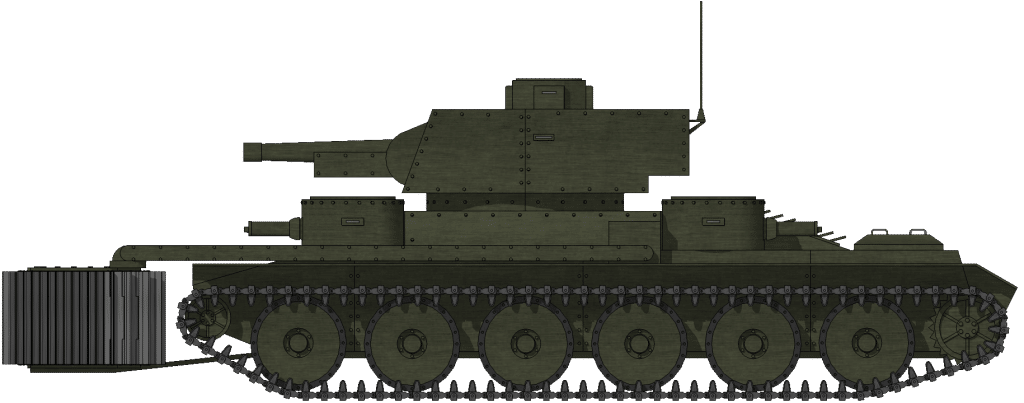
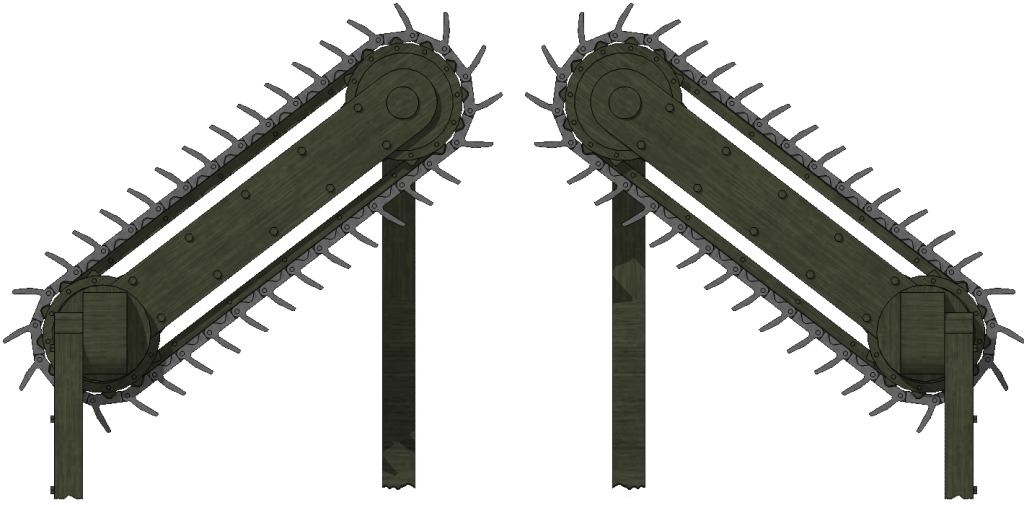
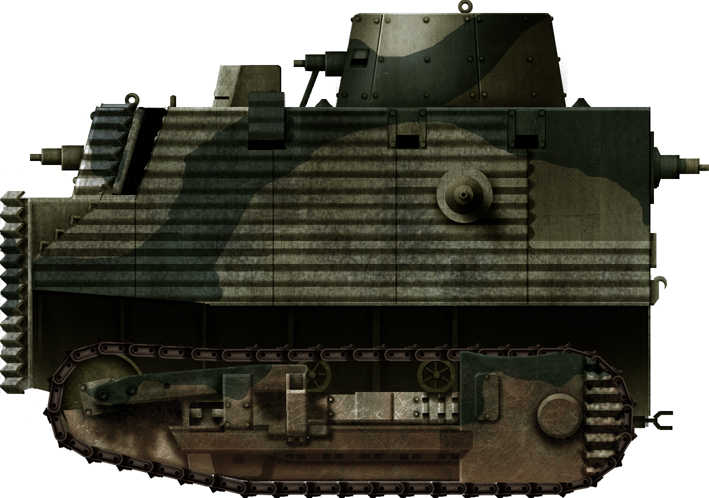
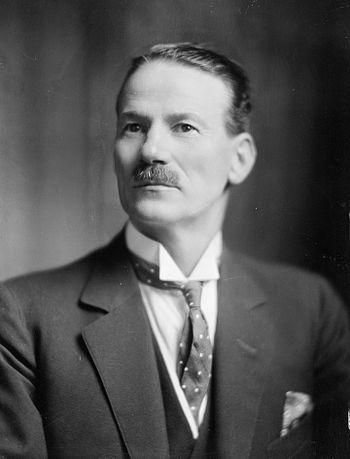 Robert ‘Bob’ Semple (21 October 1873 – 31 January 1955)
Robert ‘Bob’ Semple (21 October 1873 – 31 January 1955)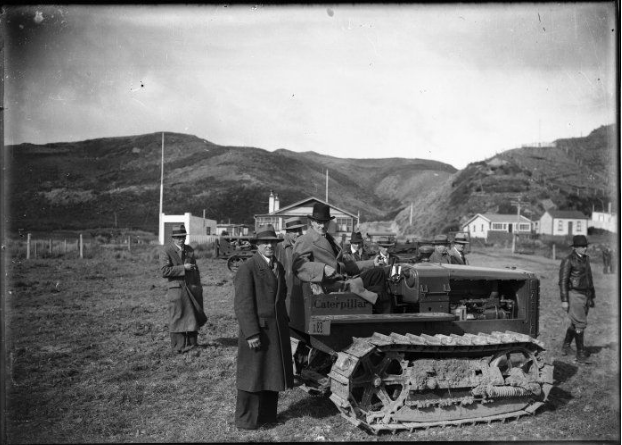
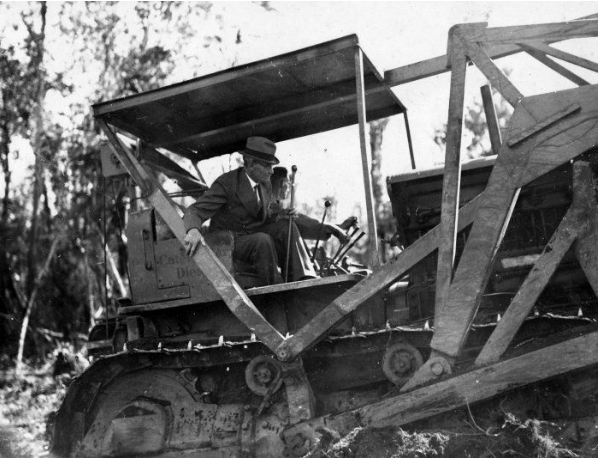
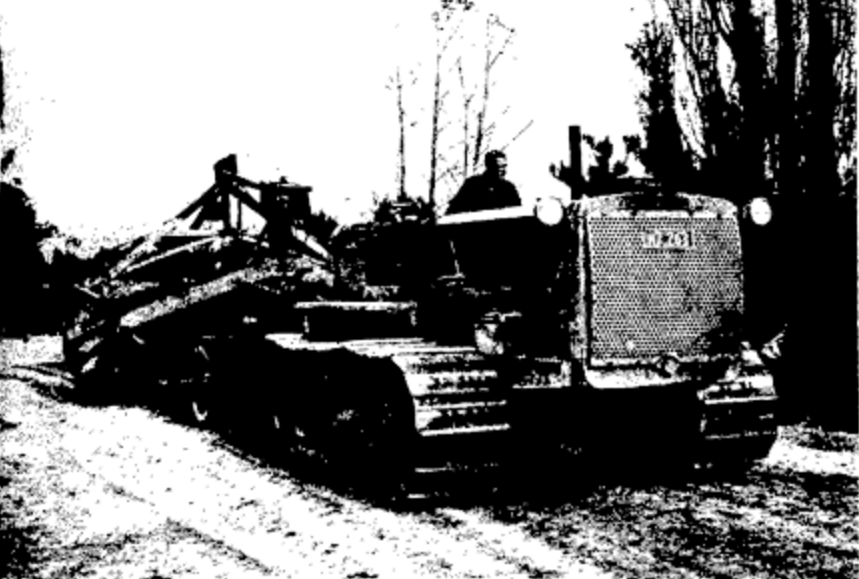
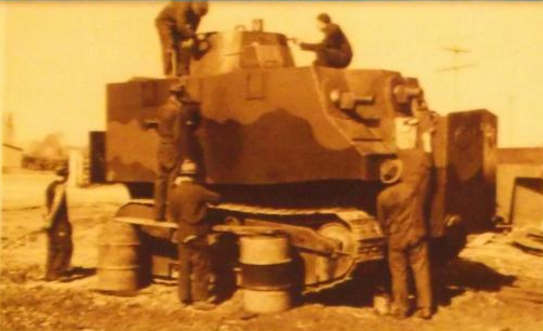
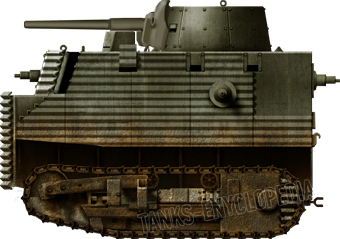
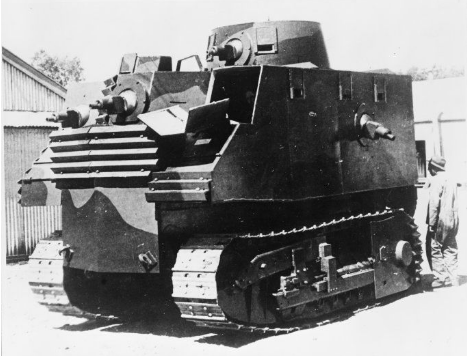
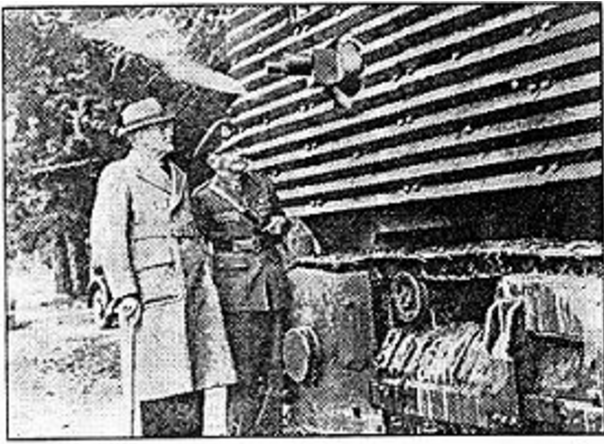
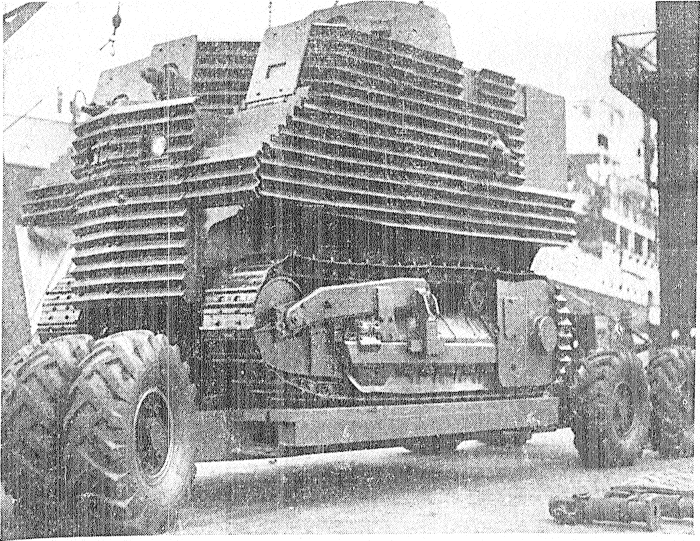
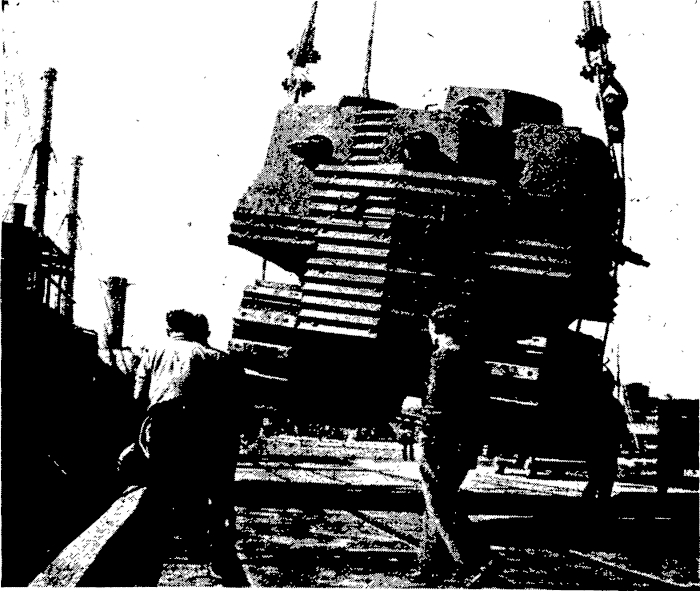
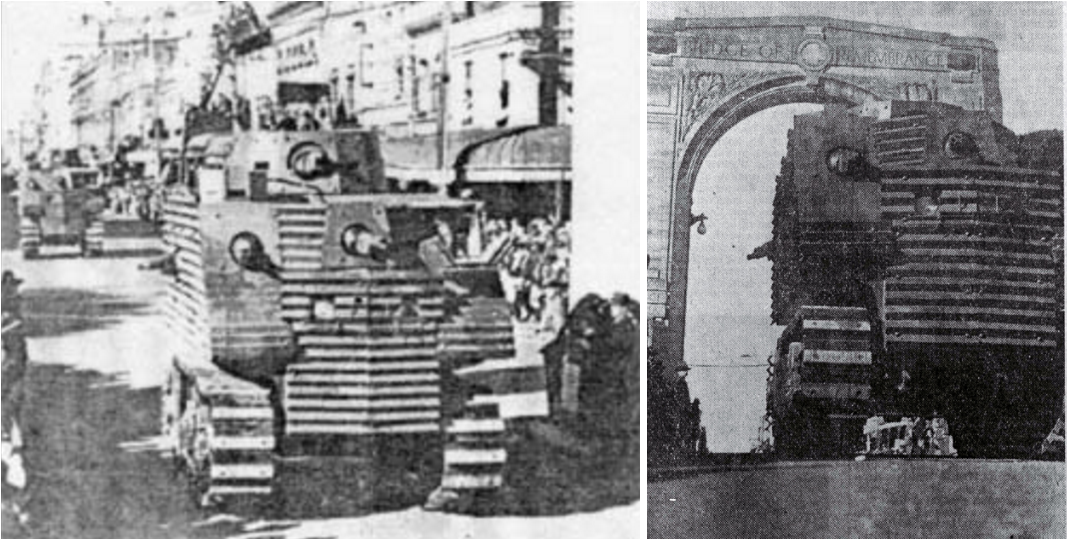
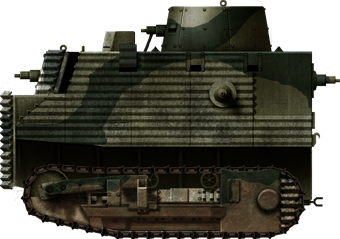
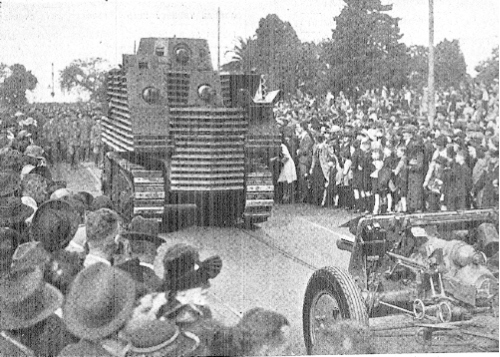
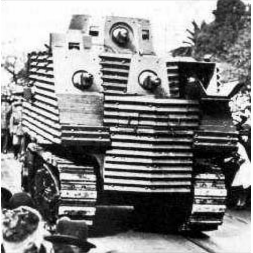
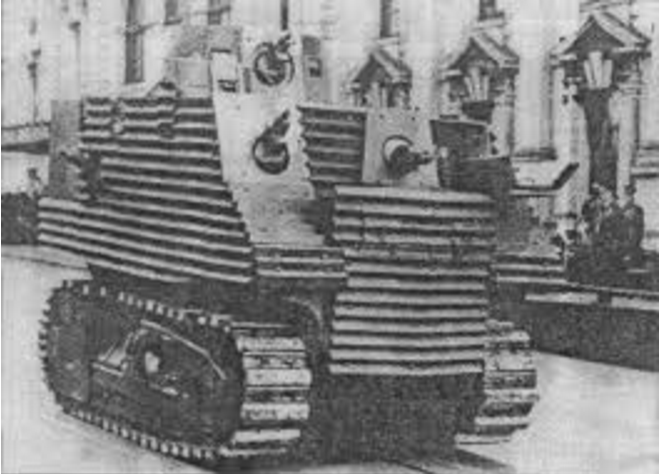
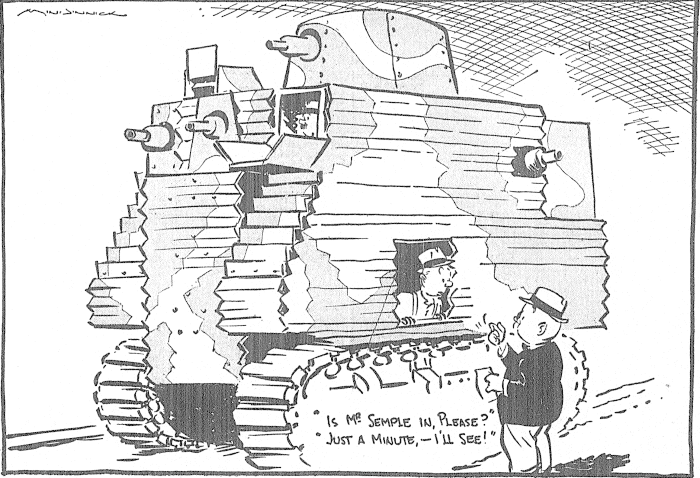
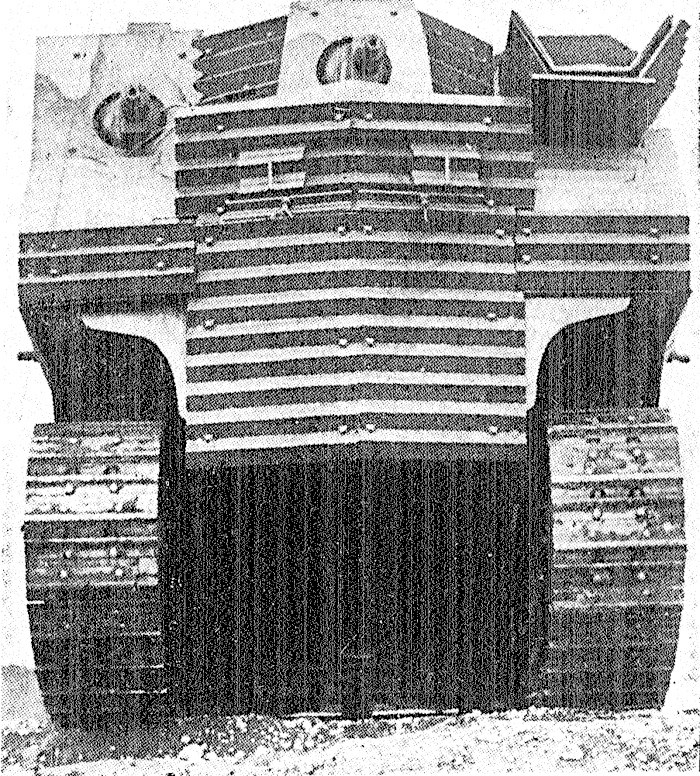
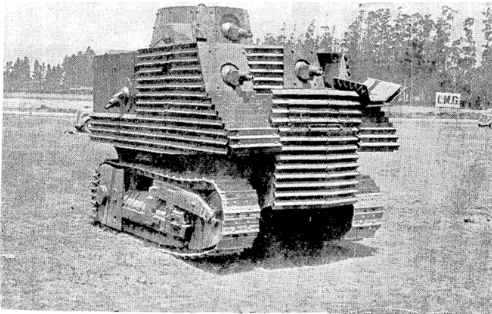
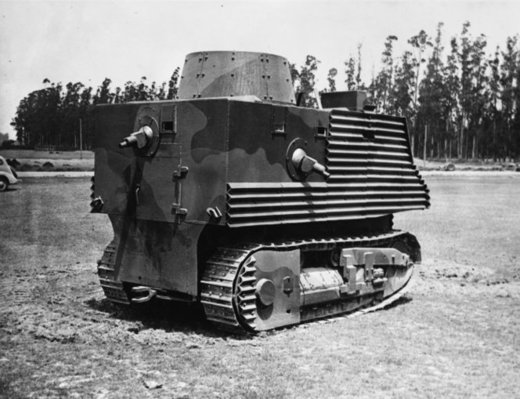
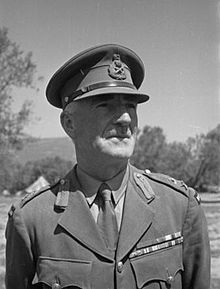 Major General Edward Puttick
Major General Edward Puttick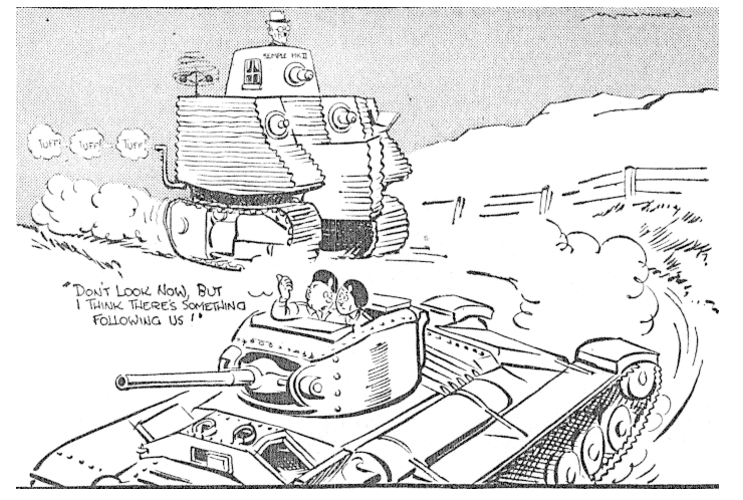
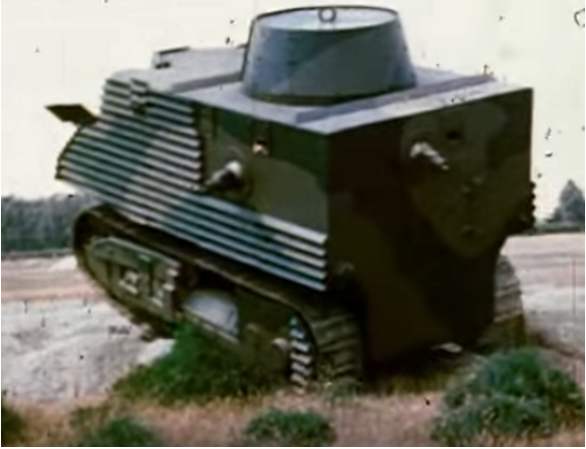
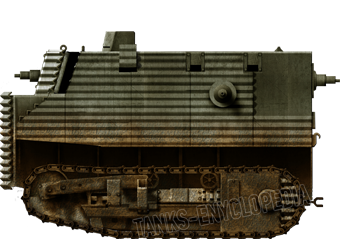
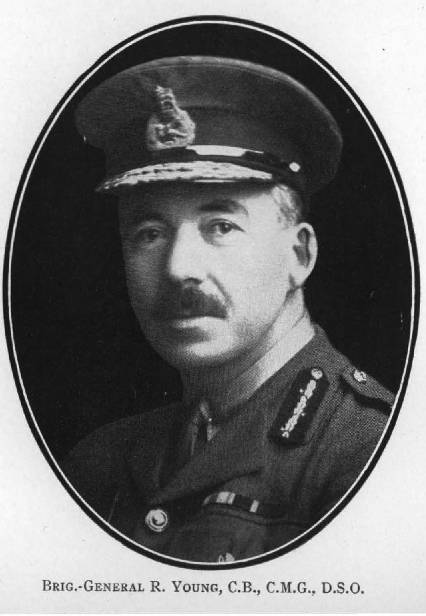 Major General Robert Young
Major General Robert Young